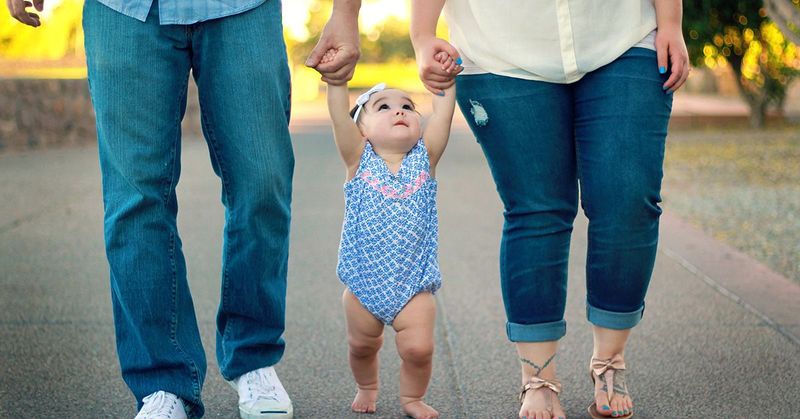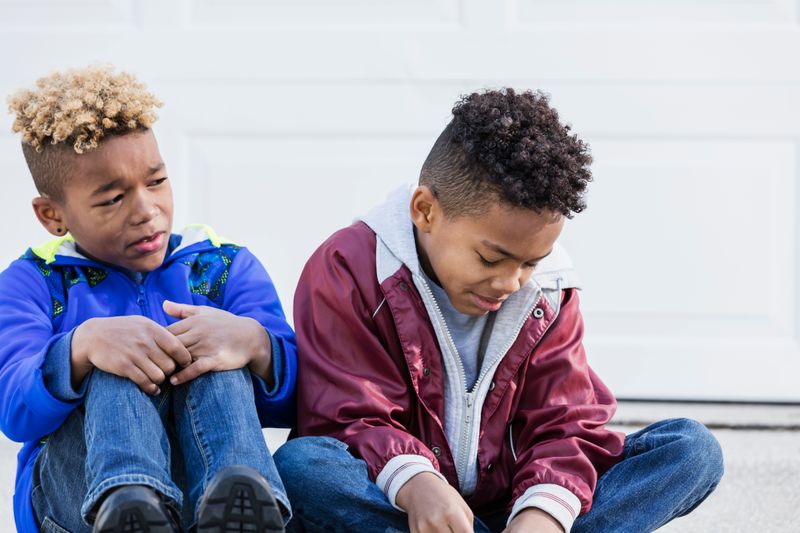Co-parenting can be a challenging yet rewarding journey. When two parents are committed to working together for the well-being of their children, it creates a nurturing environment where kids can thrive. The key to successful co-parenting is ensuring that children feel secure and loved by both parents, irrespective of the family dynamics. Providing consistency, open communication, and mutual respect are vital components. These qualities not only help in creating a peaceful household but also contribute significantly to the emotional and psychological well-being of the children. Here are 12 essential co-parenting techniques to foster a sense of security in kids.
1. Open Communication

Engaging in open communication sets a positive tone for co-parenting. Parents who talk openly about concerns and plans can navigate challenges effectively. This ensures children witness cooperation. By modeling respectful dialogue, parents teach kids how to express themselves. Open communication also helps in resolving conflicts and planning for future events. It becomes a bridge for understanding each other’s perspectives. Children benefit from seeing harmonious interactions, which instills a sense of security. When parents discuss schedules collaboratively, kids feel more at ease, knowing what to expect.
2. Consistent Routines

A consistent routine provides stability for children in co-parenting settings. Kids thrive when they know what to expect. Having similar rules and schedules in both households helps maintain balance. Routine becomes a comforting guide, especially during transitions between homes. It reduces anxiety and fosters a sense of normalcy. Parents can work together to establish morning routines, bedtime rituals, and activity schedules. This way, children feel secure and supported. Consistency across homes instills confidence and helps children adapt to changes seamlessly.
3. Unified Rules

Establishing unified rules across both homes reinforces security. When children experience similar expectations, they feel grounded. Parents who align on discipline and values provide a stable environment. This consistency is crucial for emotional development. By working together, parents can ensure that rules are fair and adaptable. It also minimizes confusion and potential conflicts. Children are more likely to respect rules that are consistently enforced by both parents. This collaborative approach emphasizes teamwork, reassuring kids of their parents’ cooperation.
4. Positive Reinforcement

Positive reinforcement encourages desired behaviors. In co-parenting, acknowledging achievements boosts a child’s self-esteem. By celebrating successes, parents foster a supportive atmosphere. This technique strengthens the parent-child bond. Praise can also motivate children to maintain good conduct across both homes. It’s essential to highlight positive actions consistently. Parents can share strategies and achievements to ensure continuity. Children feel valued and understood, deepening their sense of belonging. They learn the importance of striving for excellence, knowing their efforts are appreciated.
5. Conflict Resolution Skills

Equipping children with conflict resolution skills prepares them for challenges. Co-parenting provides an opportunity to model problem-solving. By addressing disputes calmly, parents teach valuable lessons. Children observe and learn how to handle disagreements constructively. This skill set builds resilience and empathy. Parents can encourage kids to express their feelings openly and seek solutions. It promotes understanding and cooperation. As children witness effective conflict resolution, they feel more secure navigating their own conflicts. This foundation supports emotional growth.
6. Emotional Support

Emotional support is vital in co-parenting. Creating a safe space for children to express their feelings fosters trust. When kids feel heard, they develop confidence. Parents can provide reassurance during transitions. Encouraging open discussions about emotions helps children process experiences. This builds emotional intelligence and resilience. Parents should validate feelings and offer comfort. By being present, they strengthen the parent-child relationship. Children who receive consistent emotional support feel more secure and understood. It’s crucial for their well-being.
7. Shared Celebrations

Sharing celebrations enhances family bonds. Co-parenting allows for united festivities, reinforcing a child’s sense of belonging. Both parents participating in birthdays or holidays creates cherished memories. It shows kids that they are loved by both sides. Celebrating milestones together reduces feelings of division. Parents should plan events collaboratively when possible. This unity provides stability and joy. Children appreciate seeing their parents cooperate, fostering a positive environment. It’s an opportunity to demonstrate love and togetherness, making kids feel valued and secure.
8. Flexibility and Adaptability

Flexibility is key in co-parenting. Life is unpredictable, and being adaptable helps navigate changes smoothly. Parents who can adjust plans foster a sense of security in children. It shows that cooperation is possible even when unexpected events arise. Flexibility teaches kids problem-solving and resilience. Parents should communicate openly about changes, ensuring children understand. This adaptability reflects a supportive and understanding family dynamic. Children feel assured knowing their parents can work together despite challenges. It builds a foundation of trust and respect.
9. Quality Time with Each Parent

Spending quality time with each parent is crucial for a child’s development. It strengthens individual relationships and creates cherished memories. Parents should focus on activities that interest their children. This attention shows kids they are prioritized. Both parents can plan special outings or simple bonding moments at home. Quality time enhances communication and understanding. It reinforces a child’s sense of belonging and love. By ensuring balanced time with each parent, children feel secure and valued. This attention contributes to emotional well-being.
10. Respectful Co-Parent Relationship

Respect between co-parents is foundational. It sets a positive example for children. Demonstrating mutual respect fosters a stable environment. Kids learn the importance of valuing others’ opinions. Parents should address issues privately, maintaining a united front. This approach minimizes conflict exposure. Children feel secure when their parents cooperate respectfully. It reassures them of their parents’ commitment to their well-being. Respectful interactions build trust and understanding, crucial for family harmony. Modeling this behavior teaches children how to handle relationships maturely.
11. Involvement in School Activities

Active involvement in school activities strengthens the parent-child bond. Co-parents attending events shows unified support. This engagement enhances a child’s confidence and academic interest. Parents should communicate about school schedules and responsibilities. By participating together, they demonstrate commitment to education. Children feel proud and supported seeing both parents involved. It’s important for their social and educational development. This cooperation fosters a sense of community and belonging. Kids appreciate the shared interest in their accomplishments, reinforcing their self-worth and security.
12. Healthy Boundaries

Establishing healthy boundaries is essential in co-parenting. Clear boundaries create a structured environment. Parents should communicate expectations and respect each other’s space. This clarity reduces misunderstandings and conflicts. It’s important for children to understand and respect these limits. Healthy boundaries teach responsibility and independence. Parents can set guidelines for interactions and decision-making. Consistency in enforcing these boundaries provides stability. Children feel more secure when they know their limits and expectations. It fosters a trusting and respectful family atmosphere.

Mother of three and a primary school teacher. I’ve always loved being around children and helping them, so I chose my path as a teacher. It is sometimes hectic with three children, but I am 100 percent into it and wouldn’t change it for anything in the world.

